Two very different castles- one day.
We're going to two very different castles in the Glamorgan area and if you were only able to visit one castle in your life, then Caerphilly castle would be a good choice. This is a gigantic castle and would take hours to explore, so much so, that only an aerial photograph can do it justice. Then we're off to Castell Coch a Bavarian style structure built by a Victorian Marquess, joined together by the famous 'Taff Trail'. To get there we travel along secluded car free lanes and old colliery railway routes.
Newport to Caerphilly then Cardiff (32 miles)
 We started on a grey overcast day in Tredegar Park sports ground, Newport. The park was once part
of the 17th century Tredegar house estate, and was given to Newport Borough in the 1900's. We
then travel through a modern tunnel under the M4 to the former Tredegar park golf club which was
commandeered in the 90's to be used as a sacrificial flood plane for the river Ebbw.
Now it is landscaped and has elevated cycle paths, but the cycle paths don't go anywhere as the far
exit was currently fenced off, forcing us to back track and head along a muddy path that parallels Forge road.
After a short distance along Caerphilly road we turn left at the Ruperra Arms (which won Wales Restaurant
of the Year in 2015), then it's along the Pentre-Poeth road (NCR 4). At Michaelstone we cross the Rhymney
river on an 18th century bridge and continue with glorious views of the surrounding countryside. We
reach Draethen which boasts of the oldest lead mines in Monmouthshire dating back to pre-Roman
times. Nearby is Ruperra Castle a unique example of a Jacobean Chivalric castle (we'll visit this
the next time we do this ride). We turn into Rhyd-Y-Gwen lane to reach Machen, Machen is a village
deeply rooted in the iron and coal industries stretching back as far as the 17th Century, though sadley
little trace of it remains today.
We started on a grey overcast day in Tredegar Park sports ground, Newport. The park was once part
of the 17th century Tredegar house estate, and was given to Newport Borough in the 1900's. We
then travel through a modern tunnel under the M4 to the former Tredegar park golf club which was
commandeered in the 90's to be used as a sacrificial flood plane for the river Ebbw.
Now it is landscaped and has elevated cycle paths, but the cycle paths don't go anywhere as the far
exit was currently fenced off, forcing us to back track and head along a muddy path that parallels Forge road.
After a short distance along Caerphilly road we turn left at the Ruperra Arms (which won Wales Restaurant
of the Year in 2015), then it's along the Pentre-Poeth road (NCR 4). At Michaelstone we cross the Rhymney
river on an 18th century bridge and continue with glorious views of the surrounding countryside. We
reach Draethen which boasts of the oldest lead mines in Monmouthshire dating back to pre-Roman
times. Nearby is Ruperra Castle a unique example of a Jacobean Chivalric castle (we'll visit this
the next time we do this ride). We turn into Rhyd-Y-Gwen lane to reach Machen, Machen is a village
deeply rooted in the iron and coal industries stretching back as far as the 17th Century, though sadley
little trace of it remains today.
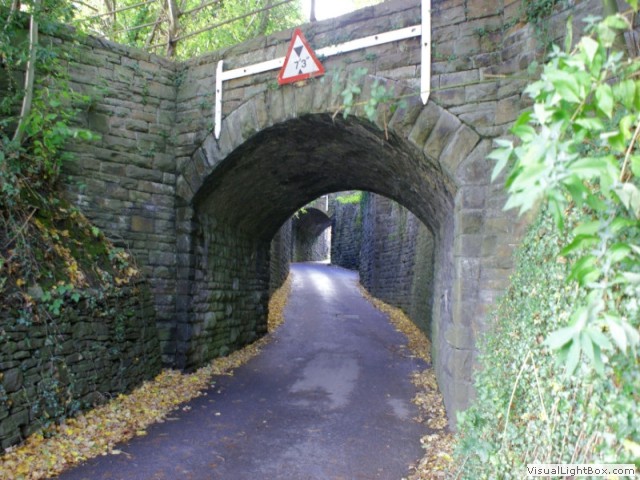 We cross the
A468 and proceed up a steep hill where a strange configuration of railway bridges appears in front
of us- there were three bridges (now only two) crossing the road, all within touching distance of
each other. Here we turn onto the Pontypridd, Caerphilly and Newport Railway path which splits into
three (hence the three bridges) and continue on this route for about a mile. At a recently placed
display of old signals, the cycle path continues on a short distance to Craig-Y-Rhacca, but we turn
left back to the main road, then follow the Rhymney river through some dense woodland. We enter
Caerphilly and catch the first sight of the monolithic castle, but it's too far away for photos
yet. One could spend a considerable amount of time at Caerphilly castle, but we just had a short
wander around the outside and passed a statue of 'Tommy Cooper' which was conveniently right
next to the visitor centre cafe- time for a brew.
We cross the
A468 and proceed up a steep hill where a strange configuration of railway bridges appears in front
of us- there were three bridges (now only two) crossing the road, all within touching distance of
each other. Here we turn onto the Pontypridd, Caerphilly and Newport Railway path which splits into
three (hence the three bridges) and continue on this route for about a mile. At a recently placed
display of old signals, the cycle path continues on a short distance to Craig-Y-Rhacca, but we turn
left back to the main road, then follow the Rhymney river through some dense woodland. We enter
Caerphilly and catch the first sight of the monolithic castle, but it's too far away for photos
yet. One could spend a considerable amount of time at Caerphilly castle, but we just had a short
wander around the outside and passed a statue of 'Tommy Cooper' which was conveniently right
next to the visitor centre cafe- time for a brew.
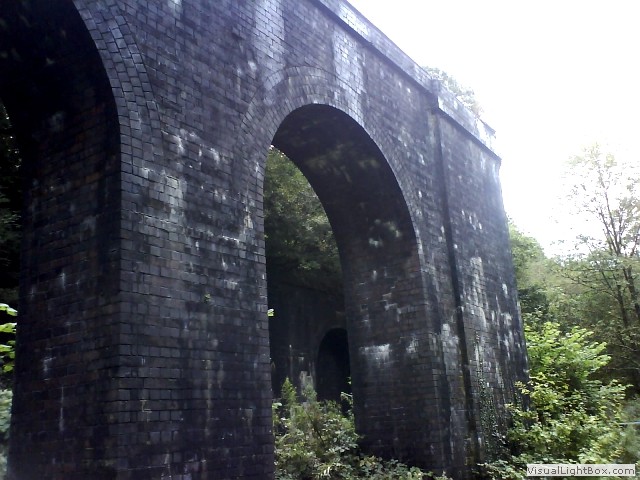 It's a steady climb now out of Caerphilly until we reach Penrhos cutting where there are some
extraordinary railway abutments, lined up diagonally across the cutting. The abutments once
supported the Penrhos viaduct from 'Taffs Well' colliery. Underneath ran the Pontypridd,
Caerphilly & Newport Railway which now forms a section of the NCR8. Penrhos
cutting still hides a little known secret, the cuttings' geology was such, that it was almost hidden
from aerial view and so housed 119 American locomotives during WW2 free from the fear of
bombardment. It still has an eerie feeling about the place, like the ghosts of all that
activity still remain. We now motor downhill away from the cutting on a good surface, little
after a mile we turn off the NCR8 and onto the 'Taff trail', the route is rough and maintains
a steady gradient up through Fforest Fawr. We passed under a little insignificant railway
bridge, but this railway bridge led to the monumental Walnut Tree
Viaduct, which spanned the Taff Valley, it consisted of seven
steel lattice girder spans supported on four massive brick piers, it stood 120
feet high and was 1/3 of a mile long. Only two of the brick piers remain, as it
was demolished in 1969. The one pier on the east bank of the River Taff stands as a monument
to the Silver and then the Golden Jubilee of Queen Elizabeth II.
It's a steady climb now out of Caerphilly until we reach Penrhos cutting where there are some
extraordinary railway abutments, lined up diagonally across the cutting. The abutments once
supported the Penrhos viaduct from 'Taffs Well' colliery. Underneath ran the Pontypridd,
Caerphilly & Newport Railway which now forms a section of the NCR8. Penrhos
cutting still hides a little known secret, the cuttings' geology was such, that it was almost hidden
from aerial view and so housed 119 American locomotives during WW2 free from the fear of
bombardment. It still has an eerie feeling about the place, like the ghosts of all that
activity still remain. We now motor downhill away from the cutting on a good surface, little
after a mile we turn off the NCR8 and onto the 'Taff trail', the route is rough and maintains
a steady gradient up through Fforest Fawr. We passed under a little insignificant railway
bridge, but this railway bridge led to the monumental Walnut Tree
Viaduct, which spanned the Taff Valley, it consisted of seven
steel lattice girder spans supported on four massive brick piers, it stood 120
feet high and was 1/3 of a mile long. Only two of the brick piers remain, as it
was demolished in 1969. The one pier on the east bank of the River Taff stands as a monument
to the Silver and then the Golden Jubilee of Queen Elizabeth II.
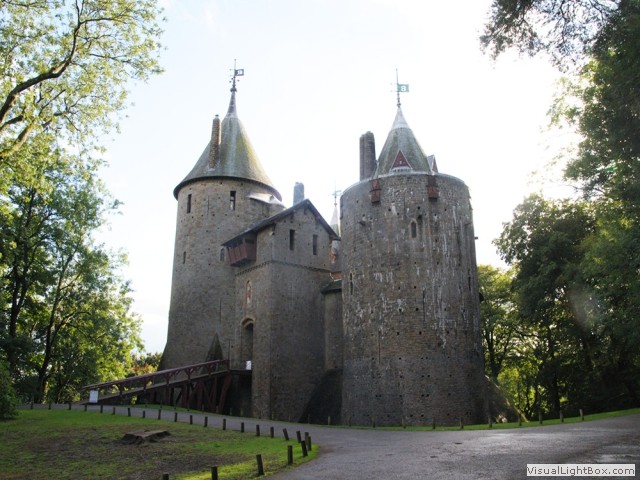 The rough trail now turns right downhill and gets very slippery with protruding fist size rocks covering the
path, if this wasn't dangerous enough; we had to dodge loads of tourists making their way up
the path. Castell Coch appears out of nowhere and looks like something out of the 'Rocky
Horror picture show'. There is a welcoming sign suggesting there's a free entrance just for the tea
rooms, but this welcome was shortly thwarted when the ticket lady stated we must leave the bikes at a rack
in the car park. Since there's been a spate of bike thefts in Newport (even when they have been
locked inside supermarket foyers), we declined. This brings me back to the campaign for attractions to provide lockable
bike sheds not just hooks to lock your bike too. We passed through the small village of Tongwynlais
and headed towards the river Taff and followed its course. Now it's a very pleasant ride alongside
the green flowing river passing Radyr weir and then the reconstructed Melingriffith Water Pump. There's
another larger weir at Llandaff and we later cross the Taff into Pontcanna Fields (which once had a
papal visit) and past the rear of Sophia Gardens (Wales National sports institute). The Taff goes
straight past the Millennium Stadium (now called the Principality Stadium) where we finish the ride.
The rough trail now turns right downhill and gets very slippery with protruding fist size rocks covering the
path, if this wasn't dangerous enough; we had to dodge loads of tourists making their way up
the path. Castell Coch appears out of nowhere and looks like something out of the 'Rocky
Horror picture show'. There is a welcoming sign suggesting there's a free entrance just for the tea
rooms, but this welcome was shortly thwarted when the ticket lady stated we must leave the bikes at a rack
in the car park. Since there's been a spate of bike thefts in Newport (even when they have been
locked inside supermarket foyers), we declined. This brings me back to the campaign for attractions to provide lockable
bike sheds not just hooks to lock your bike too. We passed through the small village of Tongwynlais
and headed towards the river Taff and followed its course. Now it's a very pleasant ride alongside
the green flowing river passing Radyr weir and then the reconstructed Melingriffith Water Pump. There's
another larger weir at Llandaff and we later cross the Taff into Pontcanna Fields (which once had a
papal visit) and past the rear of Sophia Gardens (Wales National sports institute). The Taff goes
straight past the Millennium Stadium (now called the Principality Stadium) where we finish the ride.
We could have continued on and rode back from Cardiff, but time was ticking and the legs were burning, so the train beckoned and for £5 we were home in 15 minutes. This was a great short ride steeped with bygones of the Victorian Industrial age, with a dash of the medieval age, well worth doing again.
-
Gallery
 Why not have a look at the gallery relating to this ride. Click the image or the title.
Why not have a look at the gallery relating to this ride. Click the image or the title. -
Tredegar house
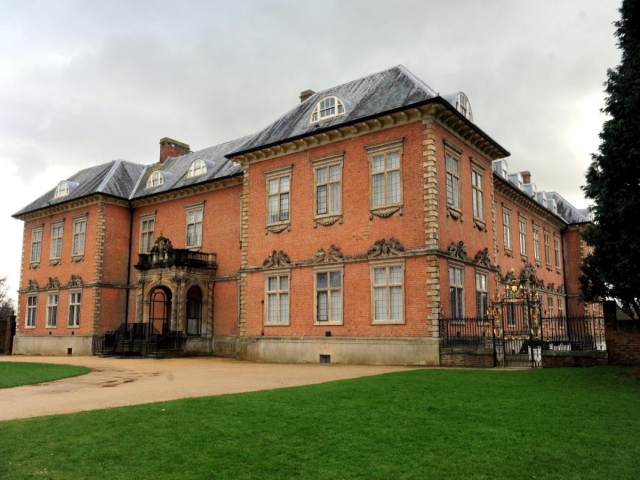 Tredegar House has never been an ordinary mansion it has been a place of black magic; where
dark arts and crucifixes played out a role. Then had a golden age of flamboyance; where riotous
parties included a menagerie of crocodiles, monkeys, and big cats.
Tredegar House has never been an ordinary mansion it has been a place of black magic; where
dark arts and crucifixes played out a role. Then had a golden age of flamboyance; where riotous
parties included a menagerie of crocodiles, monkeys, and big cats.
For over five hundred years it was home to the Morgan family, one famous Morgan was Henry Morgan. Sir Thomas Modyford, the Governor of Jamaica, gave Morgan a letter of marque (a licence to attack and seize Spanish vessels)- thus the legend of pirate Captain Morgan was formed. -
Tommy Cooper
 Born in Caerphilly in 1922, it's hard to believe it has been three decades since the shocking sudden
death of comedian Tommy Cooper live on stage. Coopers' jokes were so corny; one couldn't fail to smile,
followed a gut bursting bout of laughter. His style was unique and copied by many, but never equalled.
Born in Caerphilly in 1922, it's hard to believe it has been three decades since the shocking sudden
death of comedian Tommy Cooper live on stage. Coopers' jokes were so corny; one couldn't fail to smile,
followed a gut bursting bout of laughter. His style was unique and copied by many, but never equalled. -
The Walnut Tree Viaduct
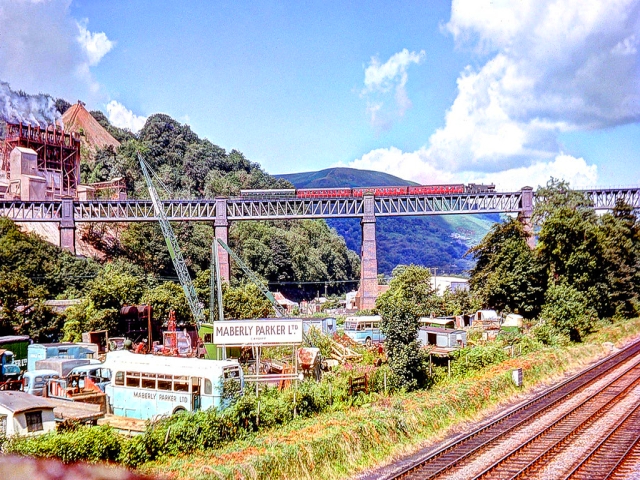 The Walnut Tree viaduct was an incredible structure towering above Taff Vale, demolition of the
viaduct started in 1969. Now the viaduct is long gone, the railway it served has gone, the quarry it
served has been abandoned, and all that remains of the viaduct are two lonely brick columns. It's all a bit sad
really, but I'm glad that there's still some grainy visual records of it.
The Walnut Tree viaduct was an incredible structure towering above Taff Vale, demolition of the
viaduct started in 1969. Now the viaduct is long gone, the railway it served has gone, the quarry it
served has been abandoned, and all that remains of the viaduct are two lonely brick columns. It's all a bit sad
really, but I'm glad that there's still some grainy visual records of it. -
Castell Coch
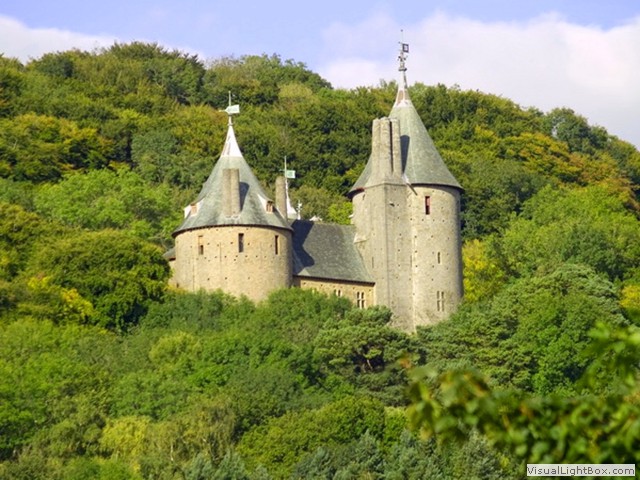 While resting on ancient foundations, Castell Coch is relatively modern, the by-product
of a vivid Victorian imagination, assisted by untold wealth. The Middle Ages fascinated the Victorians
as much as the Victorians fascinate us today.
While resting on ancient foundations, Castell Coch is relatively modern, the by-product
of a vivid Victorian imagination, assisted by untold wealth. The Middle Ages fascinated the Victorians
as much as the Victorians fascinate us today.
John Patrick Crichton-Stuart, the 3rd marquess of Bute, wanted to create a rural retreat to complement the opulence of his main residence, Cardiff Castle. The Marquess made little use of his new retreat, dying before it was finished. In 1950 his grandson, the 5th Marquess of Bute, placed it into the care of the state. It is now controlled by the Welsh heritage agency Cadw.

 Tredegar House has never been an ordinary mansion it has been a place of black magic; where
dark arts and crucifixes played out a role. Then had a golden age of flamboyance; where riotous
parties included a menagerie of crocodiles, monkeys, and big cats.
Tredegar House has never been an ordinary mansion it has been a place of black magic; where
dark arts and crucifixes played out a role. Then had a golden age of flamboyance; where riotous
parties included a menagerie of crocodiles, monkeys, and big cats.  Born in Caerphilly in 1922, it's hard to believe it has been three decades since the shocking sudden
death of comedian Tommy Cooper live on stage. Coopers' jokes were so corny; one couldn't fail to smile,
followed a gut bursting bout of laughter. His style was unique and copied by many, but never equalled.
Born in Caerphilly in 1922, it's hard to believe it has been three decades since the shocking sudden
death of comedian Tommy Cooper live on stage. Coopers' jokes were so corny; one couldn't fail to smile,
followed a gut bursting bout of laughter. His style was unique and copied by many, but never equalled. The Walnut Tree viaduct was an incredible structure towering above Taff Vale, demolition of the
viaduct started in 1969. Now the viaduct is long gone, the railway it served has gone, the quarry it
served has been abandoned, and all that remains of the viaduct are two lonely brick columns. It's all a bit sad
really, but I'm glad that there's still some grainy visual records of it.
The Walnut Tree viaduct was an incredible structure towering above Taff Vale, demolition of the
viaduct started in 1969. Now the viaduct is long gone, the railway it served has gone, the quarry it
served has been abandoned, and all that remains of the viaduct are two lonely brick columns. It's all a bit sad
really, but I'm glad that there's still some grainy visual records of it. While resting on ancient foundations, Castell Coch is relatively modern, the by-product
of a vivid Victorian imagination, assisted by untold wealth. The Middle Ages fascinated the Victorians
as much as the Victorians fascinate us today.
While resting on ancient foundations, Castell Coch is relatively modern, the by-product
of a vivid Victorian imagination, assisted by untold wealth. The Middle Ages fascinated the Victorians
as much as the Victorians fascinate us today.